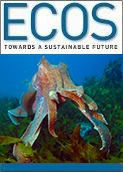
|
Published: 16 September 2013
Work from home: opportunities in biodiversity research
Having reached a milestone of 40 million records of Australian mammals, birds, insects, fish and other life forms, the Atlas of Living Australia is calling on citizen scientists and home-based volunteers to get involved and help expand and digitise its records.

|
|
Volunteers at a training course on specialised ALA software for recording field data. Credit: Robyn Lawrence, ALA
|
The records represent specimens held in collections, observations made in the field, molecular data, images, and sound recordings. The aim of the ALA is to bring all of Australia’s biodiversity information together online, making it easy for anyone to access and analyse data.
The recent milestone was reached following the addition of over 700 000 specimen records from Queensland Museum and 560 000 new and updated specimen records from Museum Victoria, dating back over 150 years, including 23 000 images. This means Queensland Museum’s digitised biodiversity collections are now freely available online, via the Atlas.
The ALA is calling on citizen scientists to upload their own photos, sightings and recordings, and encouraging organisations to come forward and share their data via the Atlas.
Over half a billion records have been downloaded from the Atlas so far, demonstrating the power of collecting biodiversity data once and reusing many times over for different purposes. The Atlas is being used to improve pest management, help revegetation groups understand what species to plant, and predict species distributions in the future.
The ALA is also crowd-sourcing the digitisation of field notes, diaries and specimen labels held by museums and collections – for example, the 1889 diary of Edgar Ravenswood Waite, an Australian zoologist, ichthyologist, herpetologist and ornithologist. Prospective volunteers can sign up at the ALA website, and start digitising data from a selected project from home.
The Atlas is a partnership between CSIRO, Australia’s museums and herbaria, biological collections, research organisations, universities and government departments and is built on open source data and infrastructure.
Source: CSIRO



